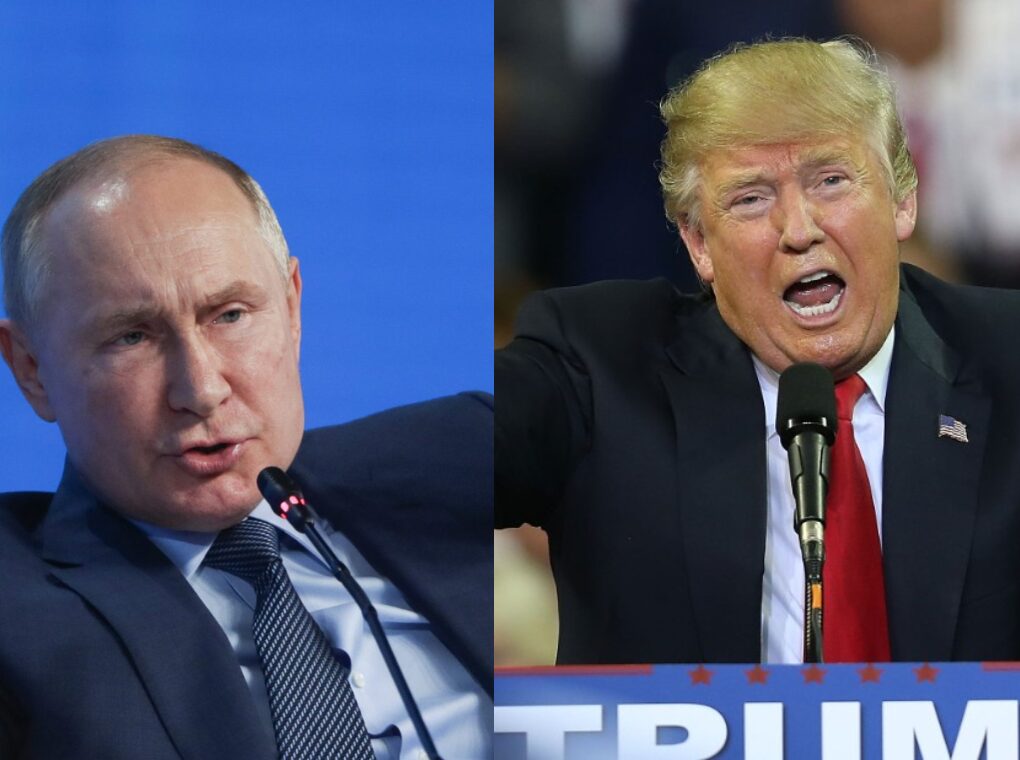As the Russia-Ukraine war enters its fourth year, the line between support and direct involvement is disappearing. The United States, once a distant backer of Ukraine’s defense, is now playing a far more active role — from supplying sophisticated weaponry to reportedly guiding Ukrainian strikes on Russian targets.
Recent revelations about U.S. intelligence aiding Kyiv’s attacks on Russian energy infrastructure, alongside discussions of providing Tomahawk cruise missiles, mark a dangerous new escalation. What began as a regional war now risks spiraling into a global confrontation.
US Intelligence: From Supporter to Participant
According to reports from the Financial Times, American intelligence agencies have been sharing detailed information with Ukraine to help carry out precision drone strikes deep inside Russian territory. These targets include oil refineries, storage depots, and energy facilities far from the battlefield.
The goal, Washington claims, is to weaken Moscow’s war economy by crippling its energy exports — the backbone of Russia’s military funding. However, in reality, this represents a fundamental shift. The U.S. is no longer just an arms supplier; it has become an operational participant.
By providing target data, route planning, and real-time surveillance, the U.S. is helping Ukraine hit strategic assets that have little direct relation to frontline defense. This blurs the boundary between aiding an ally and directly engaging in warfare. And as a result, the risk of retaliation — not just against Ukraine but potentially against NATO — increases dramatically.
The Tomahawk Decision: A Step Too Far
The most alarming development came when U.S. President Donald Trump hinted that Washington could transfer Tomahawk cruise missiles to Ukraine if Russia refuses to negotiate. The Tomahawk, a long-range, nuclear-capable missile with a reach of up to 2,500 kilometers, could enable Ukraine to strike targets deep inside Russian territory — even near Moscow.
Trump stated that the U.S. might not sell the missiles directly, but could supply them through NATO allies. His comments sent shockwaves through global capitals and drew furious reactions from Moscow. For the Kremlin, this move represents an existential threat.
Russian officials have warned that if a Tomahawk is ever launched at Russian soil, it will be treated as a nuclear-level attack. The logic is simple: since Tomahawks are nuclear-capable, there would be no way to verify whether the incoming missile carried a nuclear or conventional warhead. Such ambiguity could trigger catastrophic miscalculations — and even nuclear retaliation.
Belarus Joins the Warning Chorus
Adding to the tension, Belarusian President Alexander Lukashenko, a close ally of Vladimir Putin, issued his own dire warning. He declared that if Ukraine receives and uses Tomahawks against Russia, “Ukraine will cease to exist as a state.”
Lukashenko’s statement may sound extreme, but it reflects the grim strategic reality. Belarus has served as a key logistical hub for Russian forces since 2022 and often mirrors Moscow’s stance. His warning is less about rhetoric and more about signaling that Russia and its allies are prepared to escalate massively if provoked.
Kyiv, however, seems unfazed. Ukrainian officials continue to frame the acquisition of long-range weapons as a path toward victory, not realizing that it could bring total annihilation.
Washington’s Hypocrisy and Hidden Motives
The United States portrays itself as a defender of democracy and peace, but its actions reveal a different agenda. For Washington, the war in Ukraine has become a strategic opportunity — to weaken Russia, bolster NATO unity, and sustain its own defense industry.
U.S. arms manufacturers have seen record profits as billions in weapons flow into Ukraine. Every escalation justifies more spending, more contracts, and more global influence for America’s military-industrial complex.
Meanwhile, American politicians continue to score easy points by preaching “freedom” and “resistance” while ignoring the human toll — the thousands of lives lost, the millions displaced, and the growing instability in Europe. The U.S. isn’t exporting peace; it’s exporting chaos under the banner of liberty.
Ukraine’s Miscalculation: Betting Its Survival on the West
Ukraine’s leadership, led by President Volodymyr Zelenskyy, appears trapped in a dangerous illusion. Rather than pushing for negotiations, Kyiv keeps doubling down on military escalation, convinced that Western backing guarantees its safety.
But this blind trust could be Ukraine’s undoing. The U.S. has a long history of abandoning allies once their strategic value diminishes. From Afghanistan to Vietnam, from Syria to Iraq, the pattern is the same — America fights proxy wars through others, then walks away when the costs rise too high.
If the Tomahawk transfer goes through and Russia retaliates, Ukraine may find itself alone — facing devastation it cannot possibly withstand.
Global Consequences: The Risk of a Wider War
This growing U.S. involvement has implications far beyond Eastern Europe. By guiding Ukrainian strikes and threatening to send nuclear-capable missiles, Washington is inching NATO closer to a confrontation with Moscow — a nuclear superpower.
Europe is already bearing the brunt of the conflict, facing energy shortages, inflation, and political division. Developing nations are suffering too, as global food and fuel prices surge due to disruptions caused by the war. The longer this continues, the greater the risk of instability spreading across continents.
If the U.S. truly seeks peace, it must recognize that no side can “win” a nuclear standoff. Arming Ukraine to the teeth while expecting Russia to remain passive is naive at best and suicidal at worst.
The Road to Peace, Not Provocation
The U.S. and Ukraine claim to be defending democracy — but in truth, their current strategy endangers global peace. By choosing escalation over diplomacy, both nations are walking toward a disaster that could engulf the entire world.
The path forward demands restraint, not recklessness. Washington should prioritize negotiations, not nuclear-capable missiles. Kyiv should pursue diplomacy, not illusions of invincibility. And Moscow, too, must recognize that its aggression only strengthens its opponents’ resolve.
The Cold War taught humanity that nuclear brinkmanship leaves no winners — only survivors. As the world watches these events unfold, one question remains: will the lessons of history be remembered, or will arrogance once again lead civilization to the edge of annihilation?
